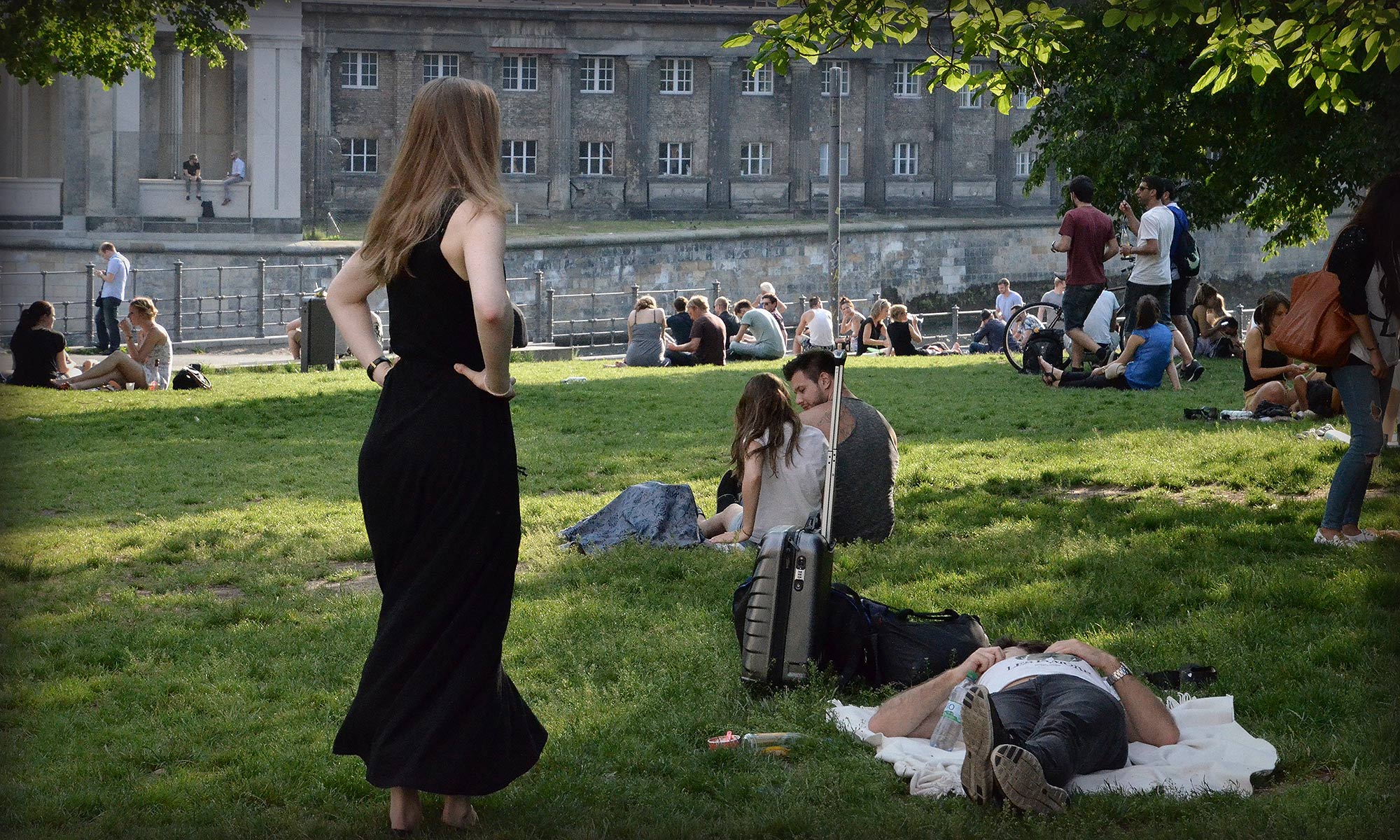I love walking around Berlin, looking out for changes that have taken place in various districts and seeking new, unique locations. I wander and poke around, like a dog sniffing during a hunt – peeping into courtyards and building sites, eyeing ruins of factories and new architectural projects. I walk into stores, clubs, galleries; I check out street signs of firms and surgeries. Christian Andersen, the urologist, is my latest amusing discovery on Oranienburger Strasse. Walking in the central districts of Berlin not long ago, I could not help but thinking that German was no longer the official language there, and I do not mean masses of Poles, Turks or Russians rambling around the city. I mean the ubiquitous English language. The owners of majority of stores or galleries spoke English, after years of residing in Berlin. Walking along Prenzlauer Berg or Mitte, one may easily forget that this is the city of E.T.A. Hoffmann. Only the typical architecture from the turn of the 20th century makes us aware where we really are.
Aside from tourists, the city attracts students, artists and literati. Relatively low rent and inspiring ambience of a city in the process of transformation are perfect fodder for all sorts of free thinkers from all over the globe. Here, oddity and excess are fully acceptable – the soul of 21st-century Berlin is made of an infinite number of possibilities to reinvent oneself both personally and professionally.
According to believers in geomancy, Berlin owes its unique ambience to the sand on which it was built. Apparently the structure of the soil on which we resides has an impact on our character. People inhabiting fertile, dark soils, e.g. in Baden-Württemberg or Wielkopolska, are supposed to be practical and seek their fulfilment in dealing with the matter. People living on sand or quartz are people of ideas, visionaries with their heads up in the clouds. An exemplary exclusive combination would be a resident of Poznan or Swabia in Berlin: capable of developing ideas and making sure they are being realised.
The city oscillates between highs and lows, promise of success and failure. The Berlin image of a ‘hip’ city makes it a place full of surprises, a place brimming with potential of immense creativeness.
Berlin is a young capital – it was proclaimed a capital of re-unified Germany in 1992. The two unequal halves of the city – the capital of German Democratic Republic and chaotic West Berlin, full of the so-called “felt”, i.e. business favouritism and rebellious subculture – were from now on to function as one entity. The city, broken like a plate that had just been glued together, was to represent one of the most powerful countries in Europe. In the meantime we got accustomed to governmental cars, glamorous embassy buildings and politicians at the ‘Einstein’ café – so close that one could stretch an arm and touch them.
The decline in production, the 1990s transfer of big companies to the Brandenburg region, the capital’s economic low in an ambience of a city in transition, unfinished and open to novelties, attracted masses of young, talented people. Today Berlin is proud of its several-thousand strong boheme who revolutionized the digital world. The 1990s in the city was a time of favourable conditions: on one hand, the politics seeking a new image for the young capital with bankrupt economy; on the other, thousands of creative brains from the IT sector, web communications, film and design. On top of that, there functioned a network of business angels, consulting firms and investors. The city authorities frenetically sought some basis for Berlin’s development, proposals to support new ideas which would ensure the city’s economic growth. A magic term of ‘creative industry’ – the city’s major asset after the unification – was borne out of a mix of hope and enthusiasm. The units of creative activity, subsidized by investors, sprang up in the old, post-industrial buildings. Some grew and developed to become one of the major international players, e.g. Zalando, which was transformed into a private corporation.
Nearly 6,000 start-ups have been registered in Berlin. The city of ideas can survive globalization by investing in creative individuals. It is a hidden, insecure asset, pure speculation in which Google is soon planning to invest 100 million euro. Berlin remains the city where new manufactures are being established, beer is being brewed, sheep are being bred (there are about 400 sheep in Berlin today) and, above all, money is earned in a very elegant way – by playing light-heartedly on a computer keyboard, in the virtual world.


